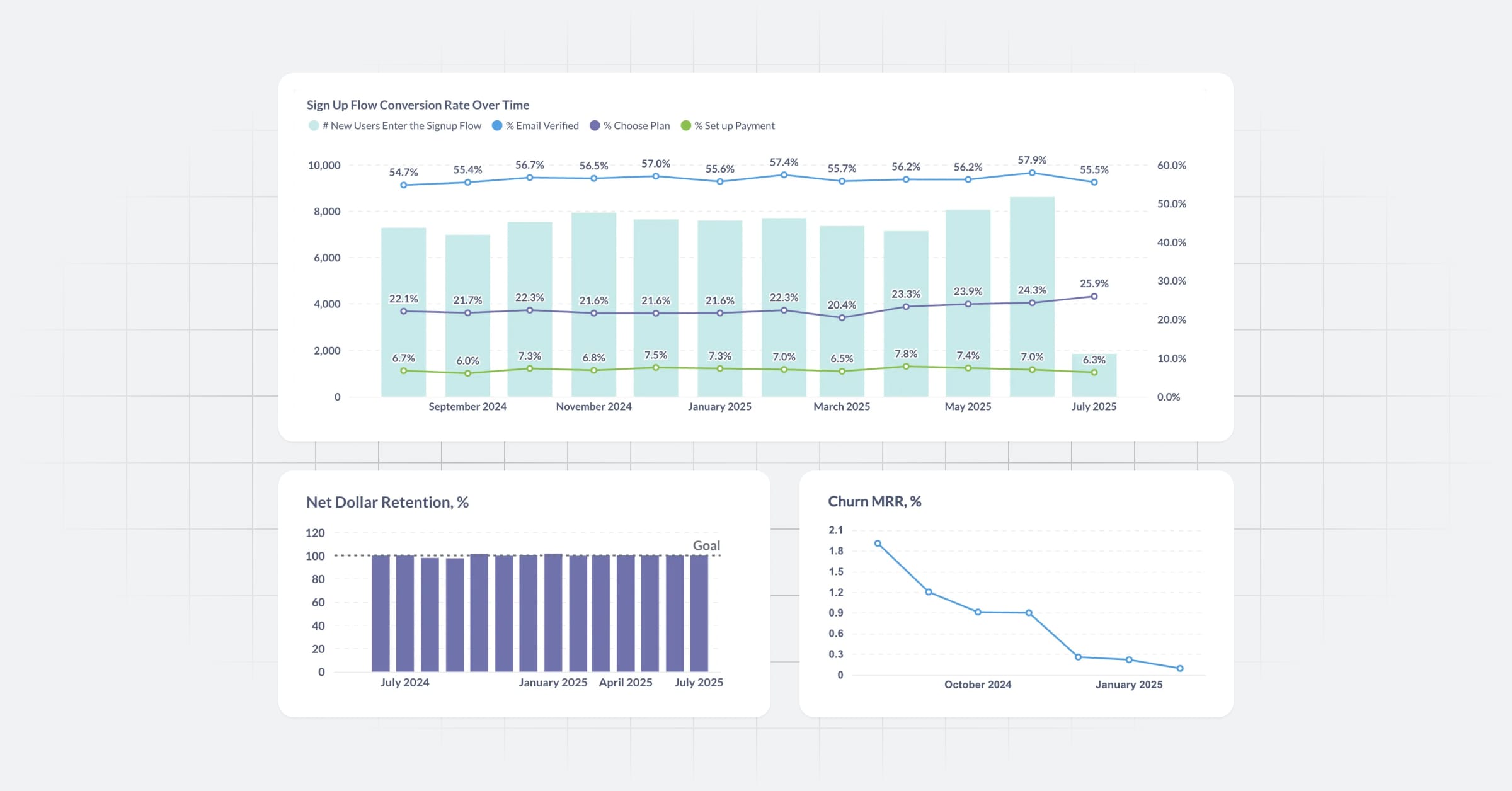Time grouping parameter
You can add a parameter to SQL questions to change how results are grouped by time: by day, week, month, and so on.
To add a time grouping parameter, you’ll need:
- An aggregation (like
COUNT). - A parameter in the
SELECTclause - That same parameter in the
GROUP BYclause.
Time grouping parameter example
Here’s an example that counts the number of orders in the orders table and inserts a parameter to allow people to change how Metabase groups the results by the created_at column.
SELECT
COUNT(*) AS "Orders",
{{created_at_param}} AS "Created At"
FROM
orders
GROUP BY
{{created_at_param}}
Like in all SQL groupings, you must include the parameter in both the SELECT and GROUP BY clauses. You can also group by multiple columns, like so:
SELECT
COUNT(*) AS "Count",
{{created_at_param}} AS "Created at",
{{trial_ends_at}} AS "Trial ends at"
FROM
accounts
GROUP BY
{{created_at_param}},
{{trial_ends_at}}
Like with all parameters, you can set a default value (e.g., “month”). With time grouping parameters, you’re limited to the options for the time grouping parameter.
If people don’t set a value for the parameter, Metabase won’t group to a date part (like day or week). It will just group by untruncated dates.
Handling aliases
Just like with field filters, if you alias a table, then map a time grouping parameter to a field in that aliased table, you’ll need to tell Metabase about the table and field alias.
Connecting to a dashboard filter
See dashboard filters and parameters.
Read docs for other versions of Metabase.


